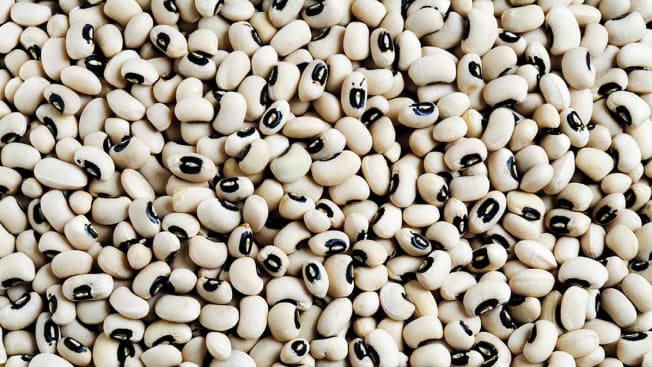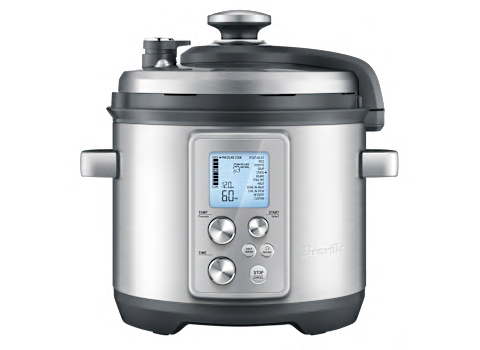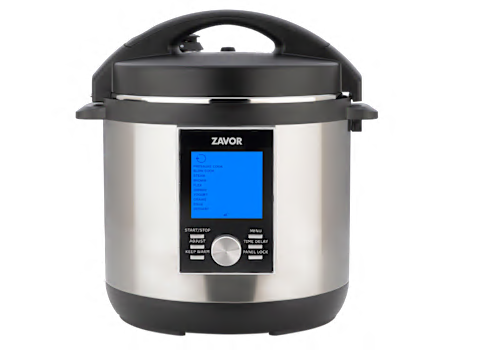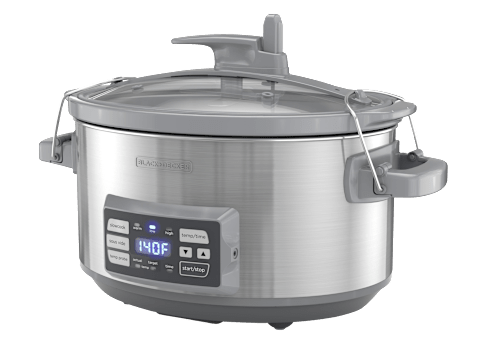These southern staples are versatile, flavorful, and nutritious

By Marisa Moore
Black-eyed peas, so named for the black splotch in the center of this creamy ivory legume, are not peas, but beans. And like all beans, black-eyed peas offer many benefits for your palate and your health.
A Brief History of Black-Eyed Peas
Black-eyed peas are known by many names around the world—cowpeas, goat peas, lubia, akkerboon, and more. They’re native to West Africa, where they’re still a major crop, and are widely grown in the Americas and Southeast Asia. The legumes are prized for their nutritional value, and, because they add nitrogen to the soil, for their ability to help other plants thrive, says Cordialis Msora Kasago, MA, RDN, a spokesperson for the Academy of Nutrition and Dietetics and founder of The African Pot Nutrition, a nutrition education company in Los Angeles. Black-eyed peas were introduced to the U.S. by enslaved people of African descent in the early 1700s. “Centuries later this legume remains a cultural staple of the African diaspora and shared throughout the world,” Kasago says.
In the American South, black-eyed peas are commonly served on New Year’s Day and during Sunday dinner throughout the year. The beans are thought to bring good luck or prosperity because they symbolize coins, says Adrian Miller, author of “Soul Food: The Surprising Story of an American Cuisine.” They’re often also paired with greens, such as collards, turnip greens, mustard greens, or a blend of different braised greens, which symbolize paper money, and cornbread, which symbolizes gold.
There are about as many origin stories on how black-eyed peas became associated with good luck in the new year as there are peas in a pot. But one that sticks dates back to Dec. 31, 1862 (or Freedom’s Eve), when enslaved Africans ate cowpeas and rice as they awaited news about the Emancipation Proclamation.
Black-Eyed Peas Nutrition
There are good reasons to include black-eyed peas in meals throughout the year. “Black-eyed peas are an affordable source of plant-based protein and an excellent source of fiber, which helps you feel full longer and plays a role in heart health and keeping blood sugar stable,” Kasago says. One cup of cooked black-eyed peas has 13 grams of protein and a whopping 11 grams of fiber—almost 40 percent of the daily value listed on food labels to represent about how much of a nutrient someone should consume if they eat 2,000 calories a day.
Like other beans, black-eyed peas are an excellent source of magnesium, which plays a role in over 300 biochemical reactions in the body, including energy production, muscle and nerve function, blood sugar control, and blood pressure management. Plus, research links higher dietary magnesium intakes with a lower risk of stroke and type 2 diabetes, likely because of the mineral’s role in blood sugar metabolism.
Just 1 cup of cooked black-eyed peas provides 20 percent of the daily value for zinc, a key nutrient for immune function and wound healing, and 23 percent of the daily value for iron, making black-eyed peas an especially good source of the mineral for people who don’t eat animal products. And anyone who is or plans to become pregnant can benefit from the fact that a cup provides 88 percent of the daily value for folate, a B vitamin that helps protect against certain birth defects of the brain and spine. You also get an impressive 50 percent of the daily value for copper, a trace mineral that’s not hard to get but important for red blood cell production and a number of other metabolic functions.
Beans are known to cause gas and bloating in some people, but research suggests that when you eat beans regularly your body adapts, so you experience less discomfort over time. When you’re adding beans to your diet, black-eyed peas may be the perfect type to start with. In one small study, 50 percent of people reported having these symptoms after eating pinto beans or baked beans made with navy beans, but only 19 percent did when they ate black-eyed peas.
How to Cook Black-Eyed Peas
Black-eyed peas have a creamy texture and an earthy essence that intensifies as they simmer. They’re widely available as dried beans but you can also find them fresh, frozen, or canned.
Soaking dried black-eyed peas overnight is optional but will decrease cooking time. It also assists in boosting iron and zinc uptake from the beans because soaking helps reduce phytic acid, a naturally present substance in beans that binds to certain minerals, making them more difficult for the body to absorb.
These beans pair well with bold flavors. “Black-eyed peas are typically stewed in a pot with some type of pickled, salted, or smoked meat, garlic, onions, thyme, and red pepper,” Miller says. Using small amounts of meat for seasoning keeps with tradition and delivers that authentic, signature smoky flavor you expect from a pot of beans. For a vegan dish with a similar flavor, swap the meat for a rich vegetable stock and add a pinch of smoked salt. You can also switch it up altogether by adding stewed tomatoes for that umami flavor. Or try Hoppin’ John, a savory one-pot black-eyed peas and rice dish traditionally served on New Year’s Day.
While you could stop at these traditional southern preparations, recipes for black-eyed peas are only limited by your creativity and taste buds. Kasago suggests trying black-eyed peas in Red-Red, a rich, flavorful Ghanian stew of tomatoes and palm oil often served with a side of plantains, or add them to a pot of rice with a little coconut milk for a delicious pea and rice dish.
You can try marinating black-eyed peas in an olive oil vinaigrette then tossing them with kale, tomatoes, peppers, and onion for a hearty and filling green salad. They’re a good base to use in a veggie burger recipe, or, as the Culinary Institute of America suggests, you can use black-eyed peas to extend burgers or meatballs made from ground beef or lamb. For burgers, use 2 parts meat to 1 part cooked mashed beans. For meatballs made with a binder (eggs or bread), use 1 part meat to 1 part beans.
Best Multi-Cookers and Slow Cookers From Consumer Reports' Tests
Using a multi-cooker or slow cooker makes cooking dried black-eyed peas easy. Here are some top-performers from CR’s tests, listed in alphabetical order.
Breville Fast Slow Pro 6 qt. BPR700BSS

Zavor LUX LCD : ZSELL02

Black+Decker Digital with Temperature Probe + Precision Sous-Vide SCD7007SSD

Hamilton Beach Temp Tracker 33866 6 Qt.
Consumer Reports is an independent, nonprofit organization that works side by side with consumers to create a fairer, safer, and healthier world. CR does not endorse products or services, and does not accept advertising. Copyright © 2022, Consumer Reports, Inc.
